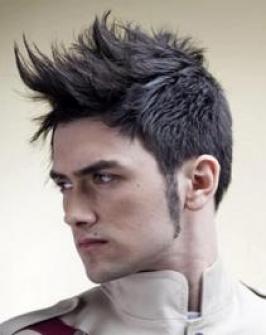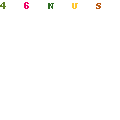Hairstyle For Men Biography
Source:-Google.com.pk
A hairstyle's aesthetic considerations may be determined by many factors, such as the subject's physical attributes and desired self-image or the stylist's artistic instincts.Physical factors include natural hair type and growth patterns, face and head shape from various angles, and overall body proportions; medical siderations may also apply. Self-image may be directed toward conforming to mainstream values (military-style crew cuts or current "fad" hairstyles such as the Dido flip), identifying with distinctively groomed subgroups (e.g., punk hair), or obeying religious dictates (e.g., Orthodox Jewish have payot, Rastafari have Dreadlocks, North India jatas, or the Sikh practice of Kesh), though this is highly contextual and a "mainstream" look in one setting may be limited to a "subgroup" in another.A hairstyle is achieved by arranging hair in a certain way, occasionally using combs, a blow-dryer, gel, or other products. The practice of styling hair is often called hairdressing, especially when done as an occupation.Hairstyling may also include adding accessories (such as headbands or barrettes) to the hair to hold it in place, enhance its ornamental appearance, rpartially or fully conceal it with coverings such as a kippa, hijab, tam or turban.During the First World War, women around the world started to shift to shorter hairstyles that were easier to manage. In the 1920s women tarted for the first time to bob, shingle and crop their hair, often covering it with small head-hugging cloche hats. In Korea, the bob was called tanbal. Women began marcelling their hair, creating deep waves in it using heated scissor irons. Durable permanent waving became popular also in this period:it was an pensive, uncomfortable and time-consuming process, in which the hair was put in curlers and inserted into a steam or dry heat chine. During the 1930s women began to wear their hair slightly longer, in page boys, bobs or waves and curls. uring this period, Western men began to wear their hair in ways popularized by movie stars such as ouglas Fairbanks, Jr. and Rudolph Valentino. Men wore their hair short, and either parted on the side or in the ddle, or combed straight back, and used pomade, creams and tonics to keep their hair in place. At the beginning of the Second World War and for some time afterwards, men's haircuts grew shorter, mimicking the military crewcut.During the 1920s and 1930s, Japanese women began wearing their hair in a style called mimi-akushi (literally, "ear hiding"), in which hair was pulled back to cover the ears and tied into a bun at the nape of the neck. Waved or curled hair became increasingly popular for Japanese women throughout this period, and permanent waves, though controversial, were extremely
Hairstyle For Me Free Pictures Pics Images Photos 2013
 Hairstyle For Me Free Pictures Pics Images Photos 2013
Hairstyle For Me Free Pictures Pics Images Photos 2013
 Hairstyle For Me Free Pictures Pics Images Photos 2013
Hairstyle For Me Free Pictures Pics Images Photos 2013
 Hairstyle For Me Free Pictures Pics Images Photos 2013
Hairstyle For Me Free Pictures Pics Images Photos 2013
 Hairstyle For Me Free Pictures Pics Images Photos 2013
Hairstyle For Me Free Pictures Pics Images Photos 2013
 Hairstyle For Me Free Pictures Pics Images Photos 2013
Hairstyle For Me Free Pictures Pics Images Photos 2013
 Hairstyle For Me Free Pictures Pics Images Photos 2013
Hairstyle For Me Free Pictures Pics Images Photos 2013
 Hairstyle For Me Free Pictures Pics Images Photos 2013
Hairstyle For Me Free Pictures Pics Images Photos 2013
 Hairstyle For Me Free Pictures Pics Images Photos 2013
Hairstyle For Me Free Pictures Pics Images Photos 2013
 Hairstyle For Me Free Pictures Pics Images Photos 2013
Hairstyle For Me Free Pictures Pics Images Photos 2013
 Hairstyle For Me Free Pictures Pics Images Photos 2013
Hairstyle For Me Free Pictures Pics Images Photos 2013










No comments:
Post a Comment